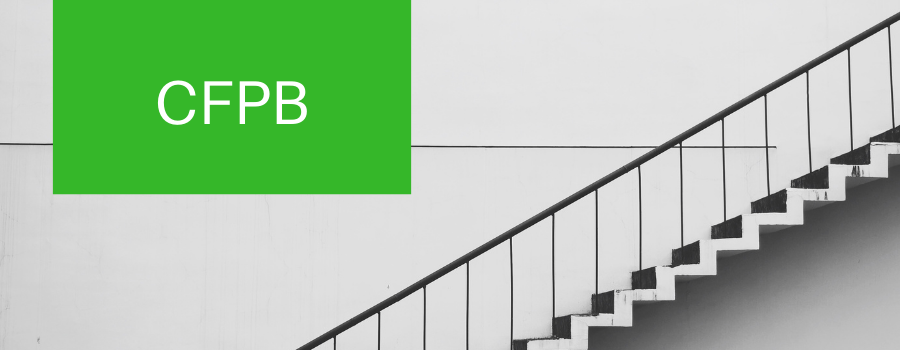
The Final Debt Collection Rule is Out – Here’s What You Need to Know
On October 30, 2020, the CFPB published its long-awaited Final Debt Collection Rule (the “Rule”) which is intended to interpret the federal Fair Debt Collection Practices Act (the “FDCPA”) and clarify how new communication technologies can be used in compliance with the FDCPA. As an unexpected twist, the CFPB has delayed publishing its final rules as to validation notices and time-barred debt disclosures and has indicated that those provisions will be published in December.
What’s Not Included in the Rule?
The Rule leaves for another day the final versions of Sections 1006.26 (Collection of Time-Barred Debt), 1006.34 (Notice of Validation of Debts) and the Safe Harbor Model Forms. The proposed rule and supplemental proposed rule included new provisions as to time-barred debt and validation notices. These provisions are still under consideration by the CFPB and are anticipated to be published in December. The final provisions are widely expected to include mandatory disclosures in addition to those already required by 15 U.S.C. §1692g(a). Those additional mandatory disclosures are likely to include:
- Disclosures as to time-barred debt or debt that can be revived by payment; and
- Additional validation information, including a tabular itemization of the amount of the debt from its itemization date and a response section which allows the consumer to dispute the debt by simply checking a prescribed number of boxes as to the basis of the dispute.
When Does the Rule Go Into Effect?
The Rule will take effect one year from its publication in the Federal Register. As of the date this article was written, it has not yet been published. It is therefore unlikely it will take effect until December 2021 or early 2022.
Who’s Covered?
While the proposed rule provided some concern as to whether it would cover first-party creditors, the final version of the Rule expressly states it applies only to “debt collectors” as that term is defined in the FDCPA. First party creditors, however, need to be mindful of the CFPB’s warning that the Rule is not intended to address whether activities performed by entities not subject to the FDCPA would violate other statutes, including the unfair, deceptive or abusive act provisions found in the Dodd-Frank Act.
What’s Included in the Rule?
The bulk of the Rule addresses communications between the consumer and the debt collector. The Rule expands significantly on the provisions of the FDCPA while attempting to clarify how debt collectors can use new communication technologies that were not in place when the FDCPA was enacted including email, voice mail, and text messages. Focusing on those communication technologies, the Rule establishes rules for engaging in communications with consumers and identifies certain policies and procedures that if implemented, would create safe harbors from FDCPA violations for debt collectors. Of particular note, the Rule contains a robust Official Commentary which includes sample language for such things as opt-out notices. While the Rule will not take effect until some time towards the end of 2021 or early 2022, compliance departments should begin aligning their policies, procedures, letters and scripts with the Rule now in anticipation of its effective date.
Attempts to Communicate vs. Communications
Generally speaking, the Rule attempts to distinguish between attempts to communicate and actual communication. “Attempts to communicate” are any acts to initiate communication about a debt and include leaving “limited contact messages.”
“Limited Content Messages” are a new concept introduced by the Rule in its definitional section (1006.1) and are intended to provide a safe way for debt collectors to leave non-substantive messages for a consumer requesting a return call while not inadvertently disclosing the debt to third parties. The Rule and its Comments make clear that Limited Content Messages are not communications regarding a debt. To qualify as a Limited Content Message, the message must be left by voice mail and only contain the specified limited content set forth explicitly in Section 1006.1(j). Those familiar with the proposed rule should note that while the proposed rule allowed for limited content messages via text message and orally, the final version of the Rule does not. Similarly, while the proposed rule included the identification of the consumer as an allowed component of the Limited Content Message, the Rule as finalized does not. Instead, a Limited Content Message can only include: (a) a business name for the debt collector that does not indicate that the debt collector is in the debt collection business; (b) a request that the consumer reply to the message; (c) the name or names of one or more natural persons whom the consumer can contact; (d) a telephone number or numbers the consumer can use to reply to the debt collector; and (e) certain very limited and specified optional content. Communications are distinguished as they convey information regarding a debt.
Time and Place
With the advent of new technologies, preventing communications at a time and place which is known or should be known to be inconvenient has become challenging for debt collectors. The Rule attempts to address these challenges in Section 1006.6 and its Official Comments. Section 1006.6 provides that an inconvenient time for communication with the consumer is before 8:00 AM and 9:00 PM local time at the consumer’s location. The Official Comments further clarify that if the debt collector has ambiguous information as to the consumer’s location, then in the absence of information to the contrary, the debt collector may assume a time that is convenient in all time zones at which the debt collector’s information indicates the consumer may be located. The Official Comments additionally attempt to provide debt collectors with guidance in circumstances in which the debt collector needs additional clarity or information from the consumer by allowing the debt collector to ask follow-up questions regarding a convenient time and place. Additionally, the Rule makes clear that no particular words are necessary for a consumer to indicate a time and place are inconvenient.
Use of Electronic Communications and a Safe Harbor
The Rule allows for the use of email and text message communications and sets forth procedures that provide the debt collector with a safe harbor if followed. Specifically, Section 1006(d)(4) allows for email communications to the consumer: first, by allowing the use of an email address the consumer has either used to communicate with the debt collector (and has not subsequently opted out) or the consumer has provided prior express consent to use and second, by allowing an email address used previously by the creditor or a prior debt collector subject to certain limitations and conditions. Section 1006(d)(5) allows for text messaging subject to similar conditions. Section 1006.6 further requires debt collectors to allow consumers to opt-out of electronic communications and further requires debt collectors to provide a clear and conspicuous statement describing a “reasonable and simple method” for opting out. The CFPB has indicated that it is currently finalizing provisions that will require debt collectors to provide consumers with, among other things, a reasonable and simple method to opt-out of electronic communications and to control the time, place, and medium for communications. Presumably, these provisions will be included in the December supplement to the Rule.
Frequency and a Safe Harbor
Section 1692d(5) of the FDCPA prohibits a debt collector from causing a telephone to ring and from engaging a person in telephone conversations repeatedly or continuously with the intent to annoy, abuse, or harass. As compared to the proposed rule, the final rule is more restrictive. Section 1006.14 establishes a bright line by placing numeric limitations on the placing of telephone calls. In its final version, the Rule creates presumptions of compliance and violation. Generally, and subject to certain very limited exceptions, a debt collector is presumed to have violated the provision if: (a) it places telephone calls to a particular person in connection with a particular debt more than seven times within seven consecutive days; or (b) after having had a telephone conversation with a particular person regarding a particular debt, makes a call within seven days of that conversation. The converse is also true. The debt collector is presumed to have complied if it stays within the call frequency limitations.
It should be noted that the exceptions presented in the final version of the Rule are more limited than those that were originally proposed. In particular, the Rule clarifies that any prior consent provided by a consumer for follow up communications expires within seven days of being provided.
Unfair or Unconscionable Means
Section 1006.22 interprets and implements Section 1692f of the FDCPA which contains a non-exhaustive list of unfair or unconscionable means to collect a debt. Section 1006.22 adds new prohibitions on communications using certain media. Section 1006.22(f)(3) prohibits communicating or attempting to communicate with a consumer using an email address that the debt collector knows is provided to the consumer by his employer unless the consumer provided the email address to the debt collector or a prior debt collector and the consumer has not subsequently opted out.
What’s Next?
As with any rulemaking, it’s not over until the fat lady sings. Depending upon the final outcome of the 2020 election, Congress may consider legislative proposals to walk back certain provisions of the Rule and potentially, overturn the Rule using the Congressional Review Act if the Democrats seize control of both the House and the Senate. It remains to be seen how the continued effects of the pandemic will impact any legislative effort to circumvent the Rule.
Additionally, there is more to come from the CFPB. In December, the CFPB plans to release the remainder of the Rule, this time focusing on disclosures. Additionally, the CFPB is looking at additional interventions, including the debt collector’s obligations to substantiate debts. In any event, compliance departments should begin carefully reviewing the Rule and its Official Comments and aligning their policies, procedures, media content, and scripts to conform with the Rule and take advantage of the safe harbors contained within the Rule.

